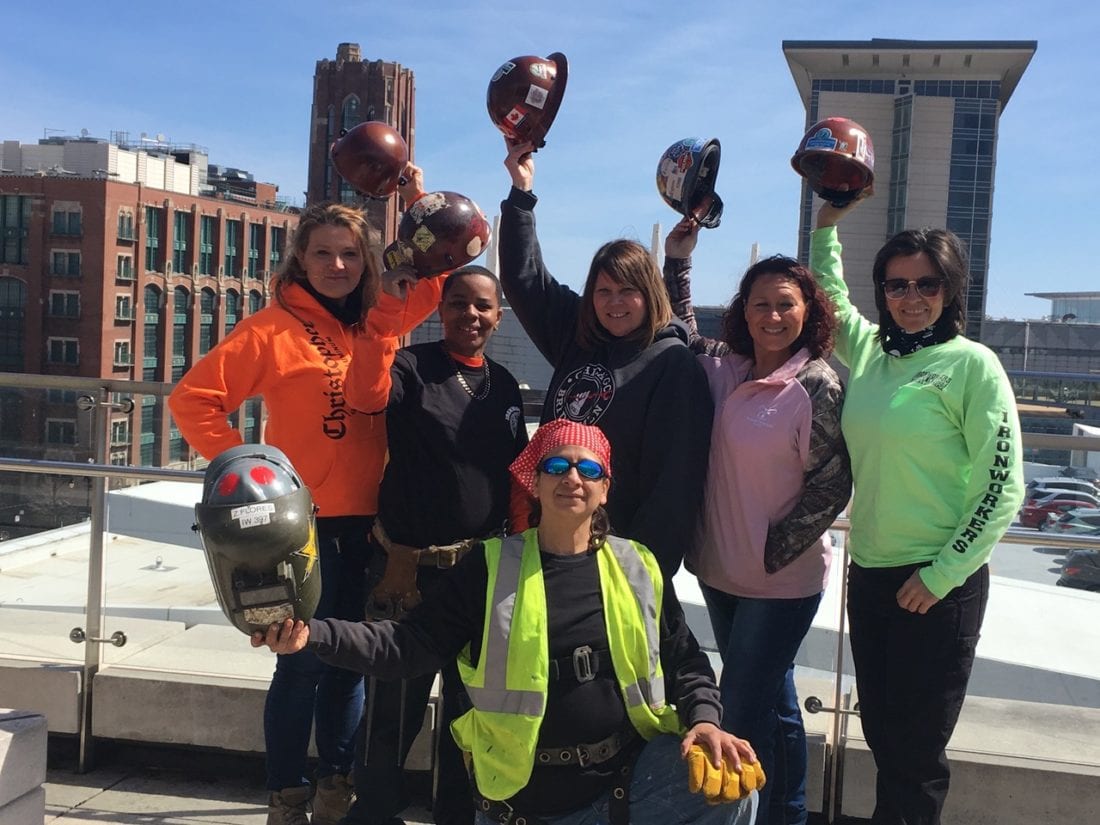When Vicki O’Leary and her fellow female ironworkers learned about the beating death of Outi Hicks, they immediately set out to find a way to get employees to speak out against harassment in the workplace. Hicks, 32, an apprentice carpenter and single mother of three, was fatally assaulted by a coworker at a construction site in 2017.
“I realized then that every woman who has worked construction has been, at some time in her career, afraid. This fear isn’t about being injured during the work itself, but for her personal safety,” says O’Leary, who is the international union’s general organizer for safety and diversity.
The “Be That One Guy,” campaign was born when the group discovered that all too often people go to work with a fear that has nothing to do with the danger of the job they are performing. The “psychological violence,” as O’Leary calls it, of harassment is a safety concern that OSHA hasn’t dealt with. Hicks’ assailant had been harassing her for several days leading up to the fatal assault.
The program’s aim is to “turn bystanders into upstanders.” Participants in this training learn how to defuse hostile situations and gain the confidence to be able to react when they see harassment. One of the most important parts of the program is when they take the pledge: “I will be that one guy who tells a coworker, foreman, or general foreman to knock it off. It only takes one to do the right thing,” explains O’Leary.
Harassment has a domino effect. The victim is worried about what is coming next, the harasser is plotting his next move and the crew is on edge from the chain of events they are witnessing. When your head is not completely in the game, it puts everyone in the scenario at risk. In construction that can have deadly consequences.
Companies and unions need to change the focus of their harassment policies and need to get tougher with harassers, said O’Leary. Many times, the victim is moved to a different crew or jobsite in an effort to defuse the situation. However, such a response actually punishes the victim and not the aggressor, who remains unaffected and may continue to harass other workers.
Doing The Right Thing
O’Leary tells of an apprentice who was being harassed by a supervisor. Seeing the harassment, everyone on the crew began to treat the supervisor the same way he was treating the apprentice. His behavior changed in a day. According to O’Leary, it’s about stepping in and looking out for one another.
The daughter of an ironworker, O’Leary joined the union as an apprentice on a dare. O’Leary went through the apprenticeship with six other female apprentices. They even got to work together on the same job for a few months. Five of them went on to complete their apprenticeship programs and become journeymen ironworkers.
O’Leary’s education continued for many years—she earned her triple major Bachelor of Arts degree in labor education, labor studies, and union leadership. She then got her master’s in organizational leadership.

Spreading the Word
The “Be That One Guy” program is currently available to all workers through the Ironworkers International training program. It is set to be rolled out to union leaders and contractors first, then on to rank and file members.
Psychological safety, like physical safety, is not just one person’s job. When it comes to harassment, everyone has a responsibility to react. Not everyone has to be confrontational or aggressive when they see harassment. However, they can talk to their supervisor in hopes that some action will be taken.
This program is needed on every jobsite, in every union, said O’Leary. Particularly, in the unions, members can be blacklisted and lose their jobs if they make a complaint or are seen as difficult. But when a whole crew rises and says that some behavior must cease, management can’t just punish them all.
Disturbing Pattern of Harassment
A recent ENR and Architectural Record survey showed that the pattern of harassment continues in the industry, both on-site and in the office. The anonymous online survey sought information on the prevalence and type of sexual harassment and gender bias, and how incidents were handled and resolved.
When asked if the respondent had personally experienced sexual harassment, over 36 percent said they had experienced it on a construction site. A similar percentage said they’d experienced it on a construction premises workplace.
More than 63 percent of respondents characterized the harassment as inappropriate personal requests, questions, jokes, or innuendo. Nearly 30 percent of respondents said they’d experienced inappropriate physical contact, and over seven percent reported threats of retaliation for non-compliance to inappropriate requests.
When asked how they handled the incident, nearly a third shared details informally with a colleague. While close to 20 percent reported the harassment to their manager, only one percent filed an Equal Employment Opportunity Commission claim. However, one in four said they didn’t take any action or speak about it publicly.
Harassment occurs not only in the construction industry; the behavior is present in all business sectors. The construction industry can be the leader if it takes a collective stance and stand up to harassment in all its forms. “Be That One Guy” is certainly a step in the right direction. #WeAreOutiHicks #BeThatOneGuy.
If you want to learn more about how you can make your organization a better and safer place to work, be sure to register for Procore’s annual construction technology summit, Groundbreak 2019 where you’ll hear from Vicki O’Leary and other thought leaders share their best practices and industry insights.

I was moved by Vicki’s presentation at Groundbreak2019 and want to take her message back to my company. I cannot repeat her message with as much passion as her. Can I get the recording of her presentation from the Key Note to play for my company?